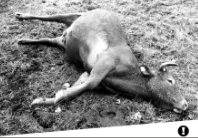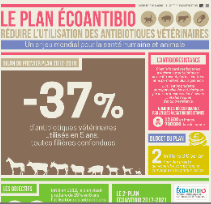Introduction
The problem of antimicrobial resistance (AMR) presents a specific challenge because of the peculiarity of the veterinary medicines market, which is regulated in many countries in a different way from human medicines. Unlike doctors, the veterinary profession often has a double monopoly on the prescription and dispensing of medicines. This means that veterinarians sell the medicines they prescribe.
With respect to AMR, this situation has been criticized as it has often been considered to lead to over-prescription of antibiotics since veterinarians have an economic interest in the abundant use of these medicines. “Decoupling” thus refers to the idea of separating the prescribing and dispensing of antibiotics in veterinary medicine, prohibiting veterinarians from selling medicines and reserving this activity for pharmacists, as is the case for human drugs.
In France, this controversy has structured the way the debates on AMR took place in the early 2010’s during the first stages of the preparation of the government’s action plan (called “Plan EcoAntibio”), and on the measures that were subsequently adopted to foster the reduction of antibiotic use in livestock farming. This example is a particularly interesting case study to understand how social sciences can contribute to the analysis of the AMR problem and to identify actions that can be taken to reduce antibiotic use in livestock farming.
From guilt to responsibility: the evolving positioning of the veterinary profession

Figure 1: ‘Do you really want a world without veterinarians?’
In France, when due to the above described dual monopoly veterinarians were accused of being primarily responsible for the AMR problem, the profession came to be perceived very negatively in the public debate (mostly in the specialized media but also to some extent in the general press): it was “guilty”. Yet, this political framing of the AMR problem was carried out by human health actors who appeared to have a vested interest in putting the blame for the problem on the agricultural sector (in particular pharmacists who were expecting to gain new shares on the veterinary drug market). They encouraged the construction of strong political and technical solutions aimed at in-depth reform of the veterinary drug market and the profession’s economic model. However, the bill on “decoupling” was opposed by stakeholders from the livestock farming sector, in particular veterinarians, who mobilised on the basis that there was a risk for the profession to disappear, which would necessarily be counterproductive regarding animal health and welfare (see for instance the brochure in Figure 1, which was a communication material issued by the veterinary unions in 2013 (Fortane, 2019)). Veterinarians won their case thanks to an important compromise: although they retained the right to deliver antibiotics, the veterinary drug market has become much more regulated than in the past (see paragraph on regulating the antibiotics market below).

Figure 2: “My vet is far more than a mere hands-on man; he is an advisor always there to prevent and vaccinate”.
This sequence is particularly interesting because it shows how a professional group deeply involved in the AMR problem has succeeded in a few years to radically change its image and establish itself as a key player in the solution to a problem, rather than as the cause of the problem. Indeed, veterinarians have successfully imposed an alternative narrative to the dominant discourse in which they define themselves as the guardians of responsible use of antibiotics: thanks to their professional expertise (and their monopoly) on animal health, they would be the only ones in a position to encourage a reduction of antibiotic use by promoting preventive (rather than curative) approaches to animal diseases that consume far less antibiotics (see for instance the poster in Figure 2, issued by the government in 2016, that shows how the image of veterinarians has shifted in just a couple of years (Fortane, 2019; Fortane, 2020)). This change in image has empowered those veterinarians who have taken responsibility to give themselves the means to change their prescribing practices.
Regulating the antibiotics market: which impact on prescribing practices?

Figure 3: “-37% of veterinary antibiotics used in 5 years, all sectors included”.
This trend towards reduced antibiotic use seems to be sustainable so far (nearly 40% reduction of antibiotic use in the livestock sector between 2012 and 2017: see the charts in Figure 3, a leaflet issued by the government in 2018 (French General Directorate for Food, 2018)). One of the reasons is probably that not only individual prescribing behaviour has changed, but that in parallel structural changes in the functioning of the antibiotic market have been implemented. Since 2014, veterinarians have to charge the same price to all their customers and, above all, they can no longer benefit from “back margins” on the sale of antibiotics, i.e. commercial discounts granted by the pharmaceutical industry if a certain annual sales volume is reached (Law for food, agriculture, and forestry, 2014). Also, since 2016, veterinarians have been required to perform sensitivity tests before prescribing critically important antibiotics, which has considerably reduced the use of this class of antibiotics (Law for food, agriculture, and forestry, 2016).
One can thus see that regulating the veterinary drug market, in particular controlling the conditions of sale and prescription (and providing the means to enforce these measures, and to sanction non-compliance), is an essential lever for changing practices in the use of antibiotics. Nevertheless, there are still unknowns, both for the social sciences and for AMR policies. On the one hand, these measures focus mainly on veterinarians and take very little account of the other stakeholders in the drug chain (pharmaceutical industries, wholesalers, distributors) who are known to have a major influence on the way antibiotics are used. On the other hand, these measures leave in the shadows the transition in terms of professional and economic models that veterinary businesses have to make in order to promote preventive approaches and be less dependent on the sale of medicines. These are probably the challenges that future AMR European policies will have to take into account, at least with regard to the prescription and sale of veterinary medicines, to ensure a sustainable decrease of antibiotic use.
Conclusion
All in all, this case-study shows how social sciences make it possible to understand the mechanisms influencing antibiotic use, pointing in particular to the fact that changing prescribing practices is far from being just a matter of individual behaviour and representations. It actually must be based on major structural transformations, as it is these that ultimately set the economic and institutional frameworks in which the actors’ practices and knowledge are embedded.
Sociologist at the French National Institute for Agriculture, Food, and Environment (INRAE), Paris-Dauphine University, France